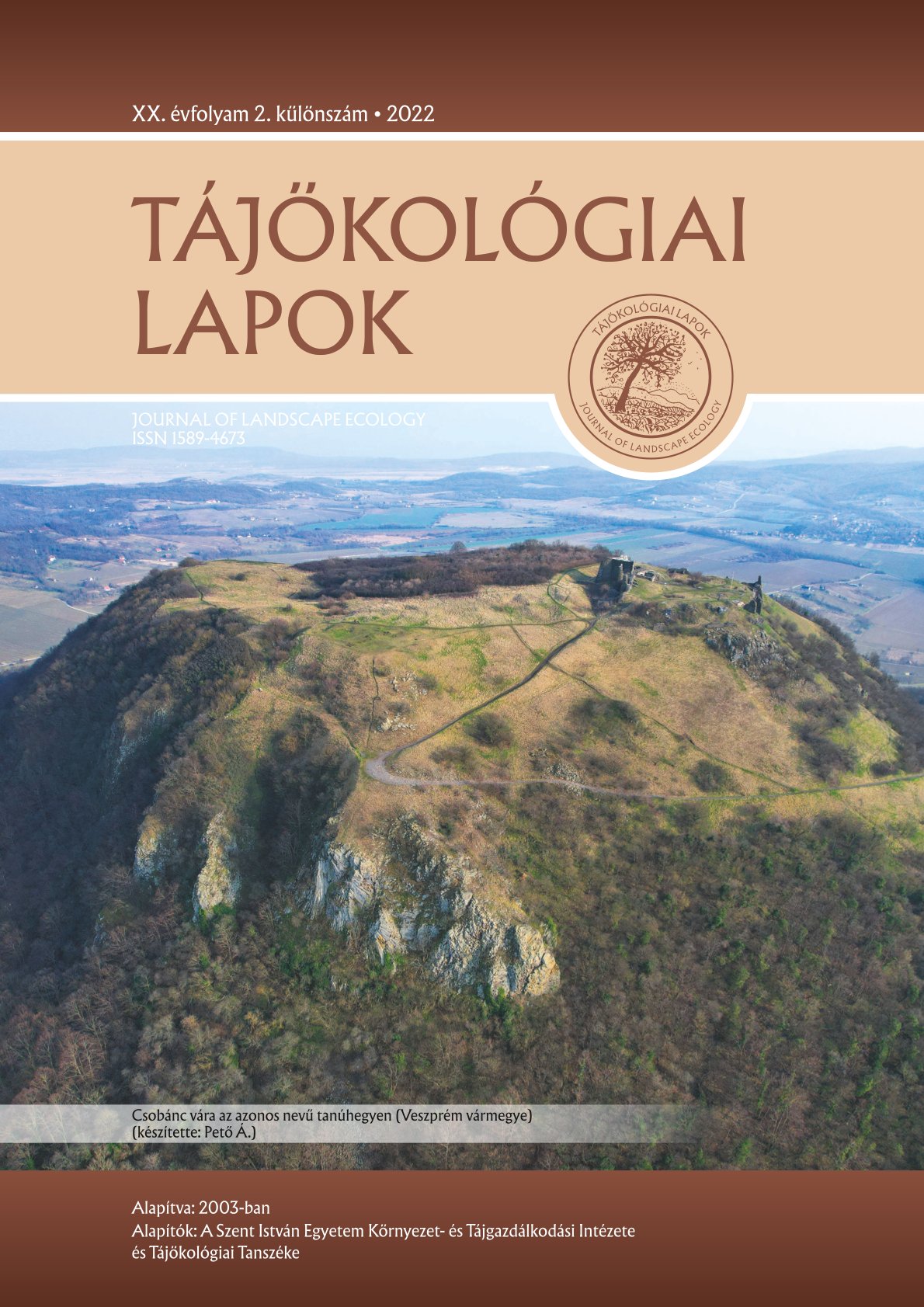Tick faunistic studies in the Keszthely and vicinity
DOI:
https://doi.org/10.56617/tl.3977Keywords:
vector, dragging, Lyme-disease, tick-borne encephalitis, frequencyAbstract
We carried out our tests in 7 different areas in Keszthely, Gyenesdiás and Fenékpuszta in the spring and autumn of 2021. The ticks were collected using the dragging method and then stored in 70% ethyl alcohol for further examination. Dermacentor reticulatus (20) and Ixodes ricinus (16) were found in the largest number during each one collection. Among the examined tick species, in the case of D. reticulatus and I. ricinus, it can be said that the proportion of host-seeking males was higher in autumn, while in the spring period there were more host-seeking females in the collected sample. The combined presence of I. ricinus adults and nymphs in April indicates that they overwintered in these stages
References
Babos S. 1965: Kullancsok – Ixodidea. Magyarország állatvilága. Fauna Hungariae. XVIII. kötet. 7. füzet. Akadémiai kiadó, Budapest. p. 38.
Bölöni J., Molnár Zs., Kun A. (szerk.) 2011: Magyarország élőhelyei. A hazai vegetációtípusok leírása és határozója. ÁNÉR 2011. MTA ÖBKI. p. 441.
Földvári, G. 2005: Studies of ticks (Acari: Ixodidae) and tick-borne pathogens of dogs in Hungary. PhD dissertation, Szent István University, Budapest. p. 87.
Földvári G., Farkas R. 2005: A Dermacentor reticulatus (Acari: Ixodidae) kullancsfajjal kapcsolatos irodalmi áttekintés és újabb ismeretek a hazai előfordulásáról. Magyar Állatorvosok Lapja, 127: 289–298.
Gray, J. S. 1991: The development and seasonal activity of the tick Ixodes ricinus: a vector of Lyme borreliosis. Review of Medical and Veterinary Entomology, 79: 323–33. DOI: https://doi.org/10.1079/cabireviews/19910506476
Hillyard, P.D. 1996: Ticks of North-West Europe. Field Studies Council, Shrewsbury. p. 178.
Hornok S. 2018: Kullancsok, óvantagok és általuk hordozott kórokozók rendszertani, öko-járványtani és földrajzi vizsgálata. MTA Doktori értekezés, Budapest. p. 54.
http1: http://www.bristoluniversitytickid.uk/
Janisch M. 1959: A hazai kullancsfauna feltérképezése. Állattani Közlemények, 47: 103–110.
Kotlán S. 1953: Parazitológia. Mezőgazdasági Kiadó, Budapest. pp. 5–29, 363–369.
Országos Epidemiológiai Központ 2009: 2. módszertani levél a kullancsok elleni védekezésről. Epinfo, 16. Különszám, pp. 1–61.
Sréter, T., Széll, Z., Varga, I. 2005: Spatial distribution of Dermacentor reticulatus and Ixodes ricinus in Hungary: evidence for change? Veterinary Parasitology 128: 347–351.
Downloads
Published
Issue
Section
License
Copyright (c) 2022 Kovács Szilvia, Varga Richárd

This work is licensed under a Creative Commons Attribution-NonCommercial-NoDerivatives 4.0 International License.
A folyóirat Open Access (Gold). Cikkeire a Creative Commons 4.0 standard licenc alábbi típusa vonatkozik: CC-BY-NC-ND-4.0. Ennek értelmében a mű szabadon másolható, terjeszthető, bemutatható és előadható, azonban nem használható fel kereskedelmi célokra (NC), továbbá nem módosítható és nem készíthető belőle átdolgozás, származékos mű (ND). A licenc alapján a szerző vagy a jogosult által meghatározott módon fel kell tüntetni a szerző nevét és a szerzői mű címét (BY).












